Most businesses don't wake up excited about compliance rules. However, Extended Producer Responsibility (EPR) demands attention and can’t be ignored. It changes how every box, strap, and wrap is judged once it leaves your site. For mid-sized companies, packaging choices suddenly carry far more significance than before.
What EPR Really Means
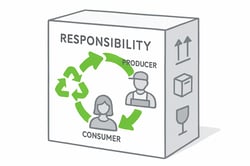
EPR shifts responsibility for a product’s end-of-life from the consumer back to the producer. As such, businesses have to think beyond how packaging performs in the warehouse or on delivery trucks. It means considering what happens when it is discarded. Materials that are recyclable or reusable become much more important, and the way packaging is designed matters in ways it never did before.
In practice, this can involve choosing mono-material packaging that is easier to recycle or just avoiding unnecessary coatings, inks, or adhesives that interfere with recyclability. The simplest change in materials can reduce future waste and ease compliance efforts.
Why Packaging Is Central to Compliance
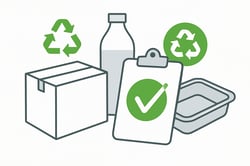
Packaging is where EPR rules show up first. The material choice, design and recyclability essentially determine whether a business meets requirements. Every non-recyclable film, label or mixed material carries risk.
For example, in 2019, Tesco committed to ensuring that all its own-brand packaging became recyclable or reusable by 2025, avoiding hard-to-recycle materials and adopting mono-material designs to simplify recycling processes (Packworld).
Similarly, Unilever has increased its use of recycled plastic in packaging and aims to make 100% of its rigid plastic packaging recyclable, reusable, or compostable by 2030 (Unilever). These initiatives not only help meet EPR requirements but also demonstrate a commitment to environmental responsibility.
The Risk Factor
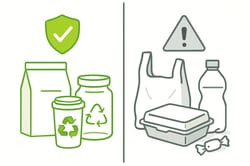
Falling behind on EPR extends beyond the risk of fines, though, as your reputation can take a hit, too. Customers, investors and supply partners notice when packaging is handled poorly or unsustainably. Once that impression is made, it can affect purchasing decisions and long-term relationships, leaving an indelible mark on your brand.
Mid-sized businesses in particular need to consider that buyers are increasingly evaluating suppliers on environmental performance. Packaging that is non-compliant, wasteful, or difficult to recycle can signal a lack of responsibility, even if the products themselves are actually high quality.
The Opportunity
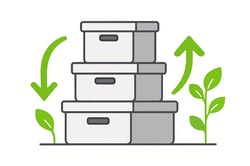
The benefits are numerous for companies that can get ahead with EPR, with a transition from compliance to credibility, since packaging that meets regulations and demonstrates environmental responsibility shows that a business is proactive and careful.
Being early with compliant packaging can streamline operations. Recyclable, reusable, and thoughtfully designed packaging often makes logistics far simpler, reduces returns and lowers overall waste. It can also become a selling point, highlighting that your supply chain is resilient and sustainable.
Going beyond efficiency, proactive EPR compliance opens doors with clients who place sustainability high up on their list of priorities. A business that clearly communicates its responsible packaging choices serves to build trust and even influence procurement decisions. Meanwhile, suppliers who act early often find that they are perceived as partners rather than just vendors, which can strengthen long-term relationships.
There’s also room for innovation. Making a switch to smarter packaging materials or redesigning existing formats often uncovers cost savings and improves handling across the supply chain. Lightweight, modular or multi-use packaging has the capacity to reduce transport emissions, cut storage costs and make returns easier to manage. In a crowded market, these thoughtful touches help a business stand out, showing that attention to detail extends beyond the product itself.
How We Can Help![]()
Meeting EPR standards can feel overwhelming, but it does not have to be. That’s why we help many businesses find practical packaging solutions to comply with rules and still fit operational needs. We focus on solutions that help with waste reduction, lessen costly errors, and support smooth supply chain performance.
Whether it’s selecting materials or designing packaging for recyclability, our aim is to make compliance manageable without driving costs out of control. For companies shipping high volumes or complex products, this support saves both money and time while strengthening reputation with clients and partners.
Certifications and Accreditations![]()
Upgrading to packaging solutions that meet EPR requirements is one part of demonstrating responsibility. We also hold multiple certifications and accreditations that reflect our commitment to sustainability, quality and compliance. These include recognised industry standards that help ensure your packaging meets environmental and operational benchmarks. Learn more about our credentials here.
Closing Thought
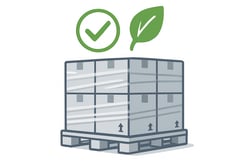
EPR compliance proves that a business can manage its responsibilities, protect its reputation and prepare for the future. Every pallet, box and wrap can help demonstrate that you take sustainability seriously and run an efficient, reliable supply chain.
We’re here to assist you in finding the right approach for your business. One that integrates smoothly into your supply chain, supports sustainability goals, and strengthens connections with your customers. Contact us today to explore solutions tailored just for you. You can send a message, email sales@allpack.uk.com, or call 01543 396 700